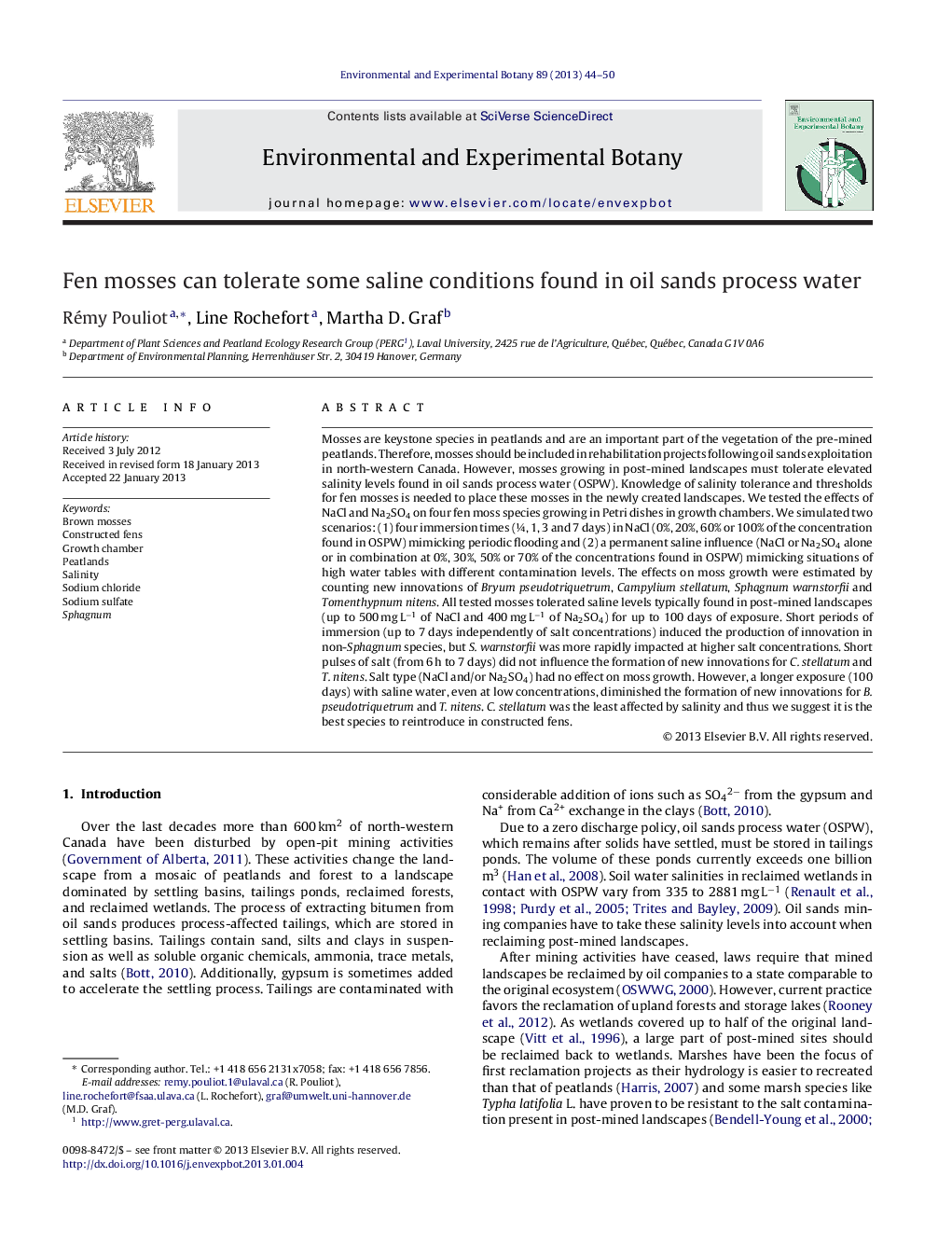| کد مقاله | کد نشریه | سال انتشار | مقاله انگلیسی | نسخه تمام متن |
|---|---|---|---|---|
| 4554539 | 1628088 | 2013 | 7 صفحه PDF | دانلود رایگان |

Mosses are keystone species in peatlands and are an important part of the vegetation of the pre-mined peatlands. Therefore, mosses should be included in rehabilitation projects following oil sands exploitation in north-western Canada. However, mosses growing in post-mined landscapes must tolerate elevated salinity levels found in oil sands process water (OSPW). Knowledge of salinity tolerance and thresholds for fen mosses is needed to place these mosses in the newly created landscapes. We tested the effects of NaCl and Na2SO4 on four fen moss species growing in Petri dishes in growth chambers. We simulated two scenarios: (1) four immersion times (¼, 1, 3 and 7 days) in NaCl (0%, 20%, 60% or 100% of the concentration found in OSPW) mimicking periodic flooding and (2) a permanent saline influence (NaCl or Na2SO4 alone or in combination at 0%, 30%, 50% or 70% of the concentrations found in OSPW) mimicking situations of high water tables with different contamination levels. The effects on moss growth were estimated by counting new innovations of Bryum pseudotriquetrum, Campylium stellatum, Sphagnum warnstorfii and Tomenthypnum nitens. All tested mosses tolerated saline levels typically found in post-mined landscapes (up to 500 mg L−1 of NaCl and 400 mg L−1 of Na2SO4) for up to 100 days of exposure. Short periods of immersion (up to 7 days independently of salt concentrations) induced the production of innovation in non-Sphagnum species, but S. warnstorfii was more rapidly impacted at higher salt concentrations. Short pulses of salt (from 6 h to 7 days) did not influence the formation of new innovations for C. stellatum and T. nitens. Salt type (NaCl and/or Na2SO4) had no effect on moss growth. However, a longer exposure (100 days) with saline water, even at low concentrations, diminished the formation of new innovations for B. pseudotriquetrum and T. nitens. C. stellatum was the least affected by salinity and thus we suggest it is the best species to reintroduce in constructed fens.
► Growth of fen mosses was assessed in saline conditions in growth chambers.
► NaCl and Na2SO4 effects were tested in concentrations found oil sands process water.
► Tested mosses can tolerate some saline contamination found in post-mined landscapes.
► In 2 cases, 100-days exposure to salts diminished the formation of new innovations.
► Campylium stellatum is the best species to reintroduce in constructed fens.
Journal: Environmental and Experimental Botany - Volume 89, May 2013, Pages 44–50